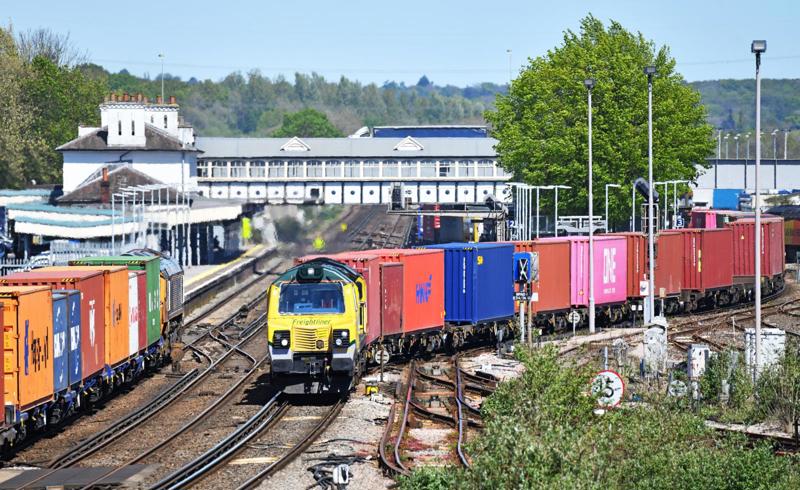
The total amount of freight moved by rail has increased by 5% year on year.

The total amount of freight moved by rail has increased by 5% year on year.
Latest statistics from the Office of Rail and Road (ORR) showed that net tonne kilometres between April 1 2024 and March 31 2025 was 16.5 billion, compared to 15.76bn in the previous period.
The net weight of goods carried and the distance it travels is used to calculated the number of net tonne kilometres.
That includes a 6% year-on-year increase in the first three months of this year from 3.88bn to 4.1bn. 2024 was the lowest January-March total since ORR’s time series began in 1998 and revealed a 5% year-on-year decrease from 2023 when the net tonne km was 4.07bn.
January-March 2025 freight movements have bounced back to surpass the 2023 figure for the same period.
The biggest percentage increase over the 12-month period has been in biomass traffic which has risen 29% from 0.89bn net tonne km to 1.145bn.
Intermodal (non-maritime and maritime) have risen to 793 million and 6.315bn net tonne km respectively.
ORR noted that while “most commodity groups had a reduction in freight moved volumes compared with the previous year”, those with the largest shared of freight moved (intermodal maritime, construction and biomass) all increased.
Intermodal maritime increased by 8%, making it the highest recorded volume for six years.
This sector has the largest shared of all freight moved (38%) with construction second at 33%.
ORR said that with a total of 5.451bn net tonne kms, it was the largest volume of construction material moved by rail since the time series began in April 1998. RAIL understands this is “propped up” by the amount of material needed for HS2.
While biomass traffic has grown, and described by someone in the industry as “properly in its stride”, future growth is expected to be limited with only two generators being served.
Metals also dipped by 2%, something ORR said came in the context of “weaker trading conditions affecting UK steelworks” and less demand for iron ore at Scunthorpe. Its total net tonne km of 1.04bn was the lowest annual figure recorded.
The freight sector also recorded its best annual performance in three years with 8.4% of trains being cancelled or arriving after 15 minutes.
Freight train kilometres between April 2024 and March 2025 rose 2% to 31.95 million.
Of that, Freightliner was responsible for 10.5m (32.9%), GB Railfreight 9.68m (30.3%), DB Cargo UK 7.86m (24.6%), DRS 2.43m (7.6%), Colas 1.15m (3.6%) and DCRail 0.32m (1%).
Coal traffic, unsurprisingly, declined 35% from 2023-24, with 52m net tonne kms recorded, the lowest since the time series began.
Login to continue reading
Or register with RAIL to keep up-to-date with the latest news, insight and opinion.


















Login to comment
Comments
No comments have been made yet.